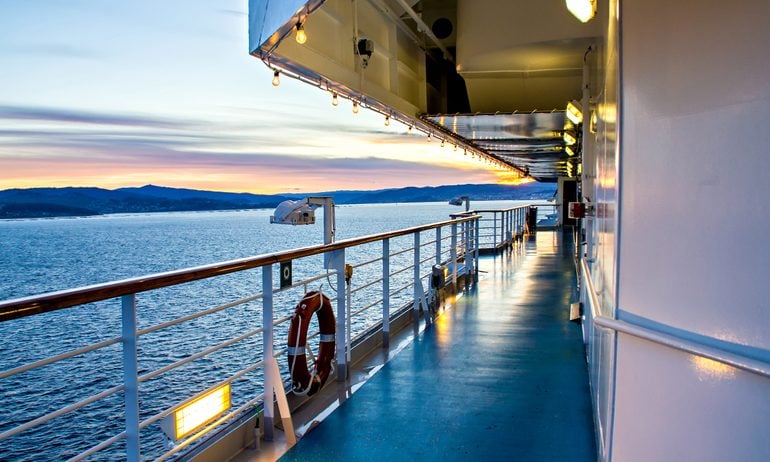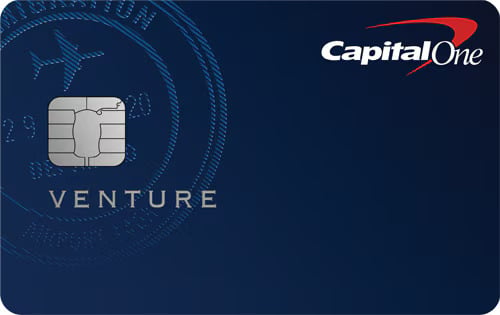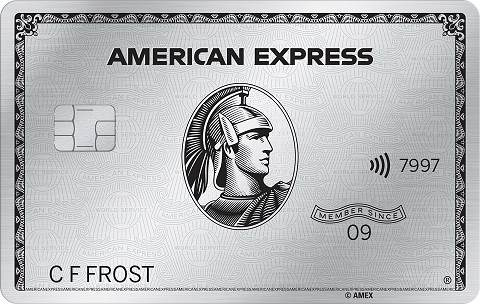Junk Fee Ban Sparks Price Transparency Wave for Cruise Fares
Cruise lines are moving to upfront pricing displays for shoppers nationwide after a California law banned junk fees.

Many or all of the products on this page are from partners who compensate us when you click to or take an action on their website, but this does not influence our evaluations or ratings. Our opinions are our own.
Until recently, the upfront price of a cruise was often hardly reflective of the final price. That’s because hidden fees, such as port fees and taxes, on cruise lines lurked like unwelcome stowaways. However, a California junk fee law banishing these surprise charges went into effect July 1, and it’s changing how people nationwide see cruise fares displayed.
Under California Senate Bill 478, companies can no longer advertise one low cost for a product or service sold in California — only to impose additional or mandatory fees later. That’s impacted all sorts of aspects of travel, from resort fees to vacation rental cleaning fees to, yes, cruise fees.
“It’s much easier now to find a good deal on a cruise, rather than a deal that looks good until all the port charges and fees are added,” Aaron Saunders, an editor at Cruise Critic, said in an email.
Though the law is specific to California, many major cruise operators have recently adopted transparent pricing models that all U.S. shoppers can see. For example, as of July 1, Royal Caribbean, Carnival Cruise Line and Holland America began including all mandatory taxes, fees and port expenses in their U.S. price displays.
Why cruise prices have a new look nationwide
There are a couple of reasons why California’s law has impacted U.S. cruise purchases, no matter where they’re sailing.
Pressure to be more transparent
Politicians, travel industry groups and consumers have called for more price transparency for years. President Joe Biden is even leading the charge on a federal crackdown on junk fees.
Many travelers prefer transparent pricing, too. In response to a proposed Federal Trade Commission rule that would prohibit junk fees, over 12,000 people submitted public comments, dozens of which specifically referenced cruises. Multiple people shared examples where final cruise prices ended up being double the advertised amount.
In a public comment submitted to the FTC in January, one consumer said “false advertising practices” disadvantaged some cruise lines. The consumer cited Virgin Voyages as an example of a cruise line with transparent pricing that was losing out to competitors who advertise lower base bares.
Even before the California ban went into effect, Virgin fares included dining at all of its eateries, entertainment, gratuities, Wi-Fi and unlimited fitness classes — things that often cost extra on other cruise lines.
Consistency can be more practical
The other possible reason the California law has had an impact on national cruise operations is practicality.
“Treating California differently than the rest of the United States could have created confusion and introduced unnecessary complexity,” according to an FAQ issued by Royal Caribbean Group on changes to advertised pricing.
Plus, consistency makes it easier for consumers to compare prices, no matter where they're buying from.
“This way, whether you’re checking fares in California, or your friend is checking fares in Florida, you’ll both see consistent pricing across the board,” Saunders said.
Cruises aren’t actually more expensive than before
Cruises that switched to transparent pricing models may now appear more expensive at the outset than they used to be, but the final cost remains the same. Saunders said that so far, he hasn’t seen any cruises change prices.
Instead, the change is that travelers can now see the total cost upfront. This could reduce potential frustrations around hidden fees.
It could also allow cruisers to make more informed decisions when comparing cruise lines. In the past, one cruise line might choose to display these fees upfront while another might not, making it hard for shoppers to compare total costs.
Cruises (finally) follow a greater trend of transparency in travel prices
Many major travel providers have been adjusting their price displays to better clarify costs upfront, even without a federal regulation. For example, Airbnb announced a total price display toggle at the end of 2022, where customers can see the total price including all fees (aside from taxes) in search results and comparison pages, such as map views.
Yet most major cruise lines didn’t roll out transparency pricing nationwide until California’s bill kicked in on July 1. Among those include Carnival Corporation (which incorporates brands including Holland America Line and Princess Cruises), MSC Cruises and Norwegian Cruise Line, according to CruiseCritic.
Cruise fees aren’t gone completely
Transparent pricing or not, knowing exactly what’s included in your cruise before booking is important. For example, Viking Cruises has long included items like Wi-Fi, meals, lectures, activities and shore excursions in its base fares. If your cruise doesn’t include those things, do your research before booking to understand how much extra you’ll pay if you plan to partake.
While most U.S. cruise lines now disclose mandatory fees, many still charge for certain nonessentials, such as specialty restaurants, entertainment, alcohol or Wi-Fi.
You’ll still owe extra money for unique experiences like imbibing in the Norwegian Cruise Line’s Skyy Vodka Ice Bar (yes, it’s made entirely of ice) or experiencing the magic and theater inside Spellbound by Magic Castle by Princess Cruises. Many major cruise lines still charge extra for shore excursions.
And some of these a la carte charges are subject to dynamic pricing as well, meaning they might get more expensive if you wait to add them to your reservation.
It’s more common to see this pricing model across cruises that offer cheaper upfront fares. In contrast, upscale cruise providers tend to have the fewest extra fees.
But a la carte pricing isn't necessarily a bad thing. If you’re seeking an alcohol-free vacation, or you enjoy the pause of notifications that comes with sailing through a cell service desert, then a cruise that charges extra for specialty drinks or Wi-Fi might be appealing. That way you’re not subsidizing services you won’t use.
$95.
$95.
$95.
$695.
Earn 100,000 bonus points after you spend $5,000 on purchases in the first 3 months from account opening.
Enjoy $250 to use on Capital One Travel in your first cardholder year, plus earn 75,000 bonus miles once you spend $4,000 on purchases within the first 3 months from account opening - that’s equal to $1,000 in travel.
Receive 60,000 online bonus points - a $600 value - after you make at least $4,000 in purchases in the first 90 days of account opening.
Earn 80,000 Membership Rewards® Points after you spend $8,000 on eligible purchases on your new Card in your first 6 months of Card Membership. Terms Apply.
• Get 25% more value out of your points when you book cruises through Chase.
• Book with your card to get automatic travel protections for your cruise.
• Redeem miles as a statement credit to cover spending on cruises.
• Book with your card to get automatic travel insurance coverage for your cruise.
• Earn 2x points on travel spending, including cruises and some ship excursions.
• Book with your card to get trip delay reimbursement, trip cancellation coverage and other travel assistance services.
• Get American Express Cruise Privileges Program benefits when you book at least five nights with eligible cruise lines. Terms apply.
• Cruise program benefits include $300 credit redeemable toward dining and spa services plus amenities like wine, chocolates and champagne. Terms apply.
How to maximize your rewards
You want a travel credit card that prioritizes what’s important to you. Here are some of the best travel credit cards of 2025:
Flexibility, point transfers and a large bonus: Chase Sapphire Preferred® Card
No annual fee: Wells Fargo Autograph® Card
Flat-rate travel rewards: Capital One Venture Rewards Credit Card
Bonus travel rewards and high-end perks: Chase Sapphire Reserve®
Luxury perks: The Platinum Card® from American Express
Business travelers: Ink Business Preferred® Credit Card
Chase Sapphire Preferred® Card
Travel
Dining
🔥 Huge highest-ever bonus on NerdWallet's 2025 Best All-Purpose Travel Rewards Card is back. Don't miss your rare chance to: Earn 100,000 points when you spend $5,000 on purchases in the first three months. That's worth at least $1,250 toward travel booked through Chase.





